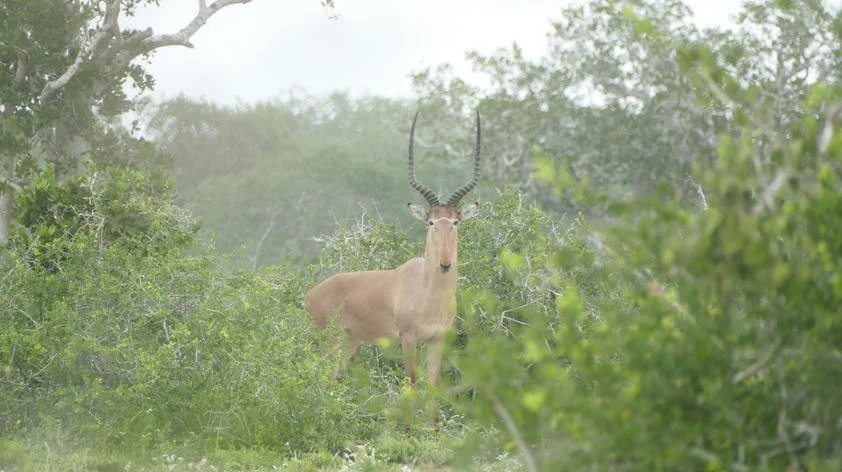Preserving the Precious Hirola Antelope
On 12th August, we come together to celebrate World Hirola Day, a special occasion dedicated to raising awareness about the critically endangered hirola antelope and the urgent need for its conservation.
With its striking appearance and unique ecological significance, the hirola holds a special place in the heart of Africa's Savannah.
As we commemorate World Hirola Day, let us delve into the world of this remarkable antelope, the challenges it faces, and the efforts being made to ensure its survival.
The Enigmatic Hirola Antelope
The hirola (Beatragus hunteri), also known as Hunter's hartebeest, is a rare and elegant antelope species found only in a small region along the border of Kenya and Somalia.
With its sandy brown coat, sleek body, and gracefully curved horns, the hirola is an emblem of the African savanna.
This unique antelope is known for its distinctive "blinking eye" behaviour, where it rapidly raises and lowers its white-rimmed eye patches, possibly as a form of communication or territorial display.
Ecological Significance
The hirola antelope plays a crucial role in the savanna ecosystem. As a selective grazer, it helps regulate vegetation, promoting biodiversity and maintaining the delicate balance of the grassland habitat it inhabits.
By consuming specific grass species, the hirola prevents the dominance of certain plants, creating a diverse mosaic of plant life that benefits numerous other species, including insects, birds, and smaller mammals.
Conservation Challenges
The hirola antelope faces numerous challenges that have led to its critically endangered status. Habitat loss due to overgrazing, competition with livestock, and encroachment by human settlements are major concerns. These factors have caused the hirola's range to shrink significantly, limiting its ability to find suitable habitats and access sufficient food and water resources.
Poaching and illegal hunting also pose a severe threat to the hirola population. Despite protective measures, such as national park designations and conservation initiatives, hirola antelopes continue to be targeted for their meat and hides, further reducing their numbers.
Conservation Efforts and Solutions
International organisations, governments, and local communities are working together to conserve the hirola antelope and its habitat. Efforts include establishing protected areas, implementing community-based conservation programs, and conducting research to better understand hirola behaviour and habitat requirements.
Conservation organisations collaborate with local communities to promote sustainable land management practices and raise awareness about the value of hirola conservation. These initiatives aim to reduce habitat fragmentation, mitigate human-wildlife conflict, and support the coexistence of hirola antelopes and local communities.
Innovative approaches such as hirola breeding and reintroduction programs have been initiated to boost the population and increase genetic diversity. These programs involve captive breeding, habitat restoration, and translocation efforts to establish new populations in suitable areas.
Education and Advocacy
World Hirola Day is a valuable platform to educate and raise awareness about the hirola antelope and the urgent need for its conservation. By sharing information about the ecological importance of the hirola and the challenges it faces, we can inspire action and foster a sense of responsibility towards its preservation.
Supporting reputable conservation organisations financially or through volunteering can make a significant impact. Donations contribute to vital research, habitat restoration, and community engagement initiatives that support hirola conservation. Supporting ecotourism initiatives that promote responsible wildlife viewing and contribute to local economies can also help raise awareness and provide economic incentives for hirola conservation efforts.
World Hirola Day is a reminder of the critical importance of conserving and protecting the hirola antelope and its unique savanna habitat.
By understanding the challenges faced by this endangered species and supporting conservation efforts, we can ensure a future where the hirola continues to grace Africa's grasslands.
Let us celebrate the beauty and grace of the hirola on this special day and commit to safeguarding its survival for generations to come.





